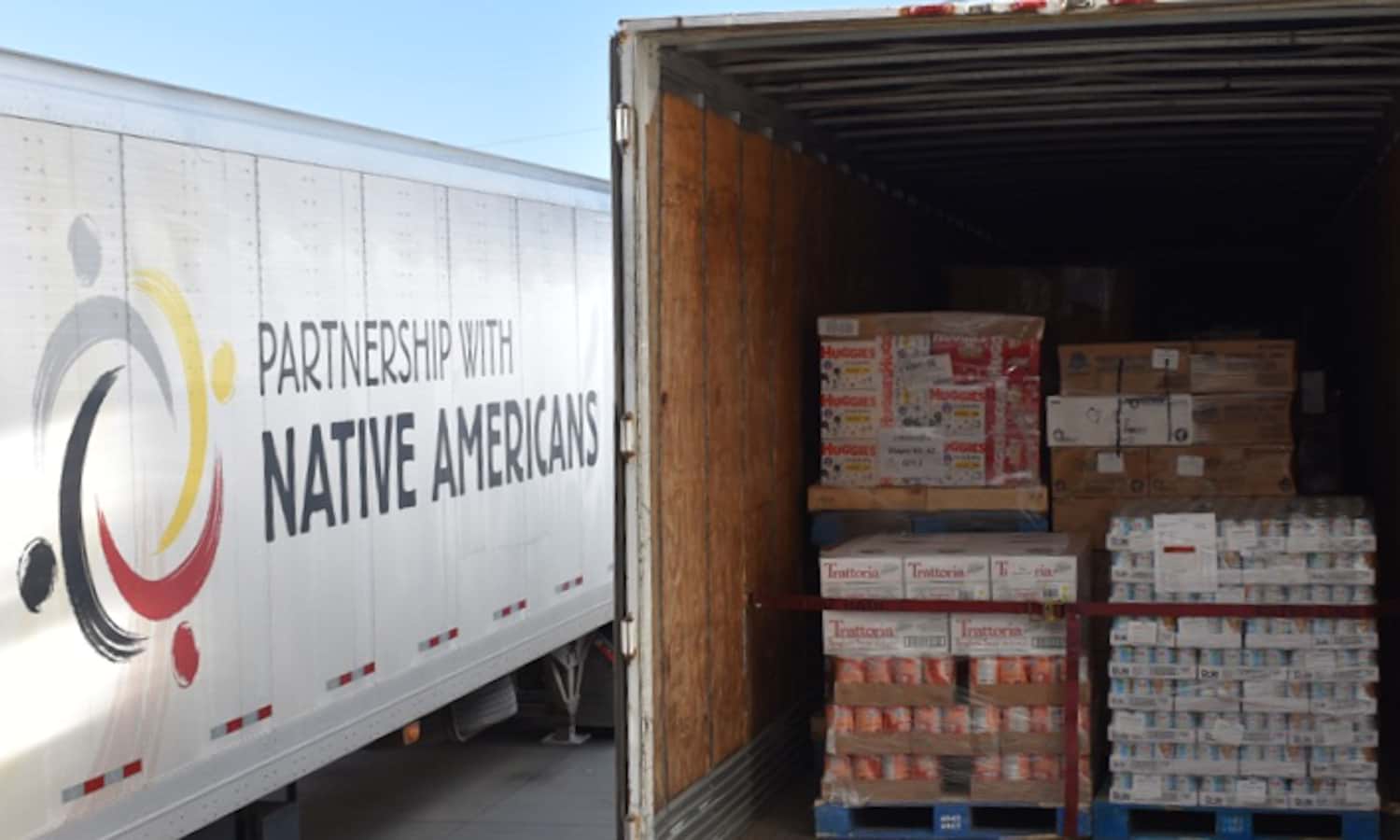As COVID-19 ravages Native communities in the United States, Indigenous peoples face increased threats of food insecurity, according to an editorial in the Journal of Clinical Nursing. But the Native-led nonprofit Partnership With Native Americans (PWNA) is working to strengthen the resilience of Native food systems and alleviate poverty on rural reservations.
Before the pandemic, over 60 percent of Native-majority counties in the U.S. were considered “highly food insecure,” according to a 2015 Feeding America report. And while the national poverty rate hovers around 17 percent, the average poverty rate in these counties is 34 percent.
“Food insecurity goes back to the start of colonization, the land grab, and resources taken from the people…Native people’s food systems were wiped out,” Raphael Tapia Jr., Vice President of Programs at PWNA, tells Food Tank.
The Navajo Nation, occupying the largest area of Indigenous-governed land in the U.S., recorded a COVID-19 death toll of 489 as of late August, according to the Navajo Nation Department of Health. Per capita, this is an infection rate of 3.4 percent – nearly double that of New York City.
And at the height of the crisis in New Mexico, Native Americans faced 23 times higher mortality rates than whites, according to the state’s department of health.
Tapia says COVID-19 amplifies the lack of access to fresh food in many rural reservations. For instance, “the Navajo Nation as a whole has only 13 grocery stores for the approximately 173,000 people living on the reservation that spans Arizona, Utah, and New Mexico,” Tapia tells Food Tank.
Yet the Department of Treasury muddled its calculation and distribution of aid to Native tribes under the Coronavirus Aid, Relief and Economic Security (CARES) Act. This led to delays in vital relief funds for Indigenous communities around the country.
In response to the crisis, PWNA pivoted its operations to focus on food security in reservations. Supporting community-based initiatives, they are delivering food, water, hand sanitizer, toilet paper, and other essential products to their partners on the ground.
With PWNA’s support, tribes are drawing on their long history of self-sufficiency, Tapia says. On some reservations, food banks are operating contactless pickup points for PWNA’s deliveries of food and water. Other community members are starting gardens and requesting seeds from PWNA.
The organization also started a video series for professionals who make meals at senior centers and health facilities around the country. These videos intend to revive traditional recipes, share harvesting methods, and reduce food waste.
“It is more than food and addressing hunger,” Tapia tells Food Tank. “For Native people, food is a part of addressing mental, physical, emotional, and spiritual wellness. Food is connected to ancestral teachings, language, and belief systems that are unique to each Native community.”
Photo Courtesy of Partnership With Native Americans











